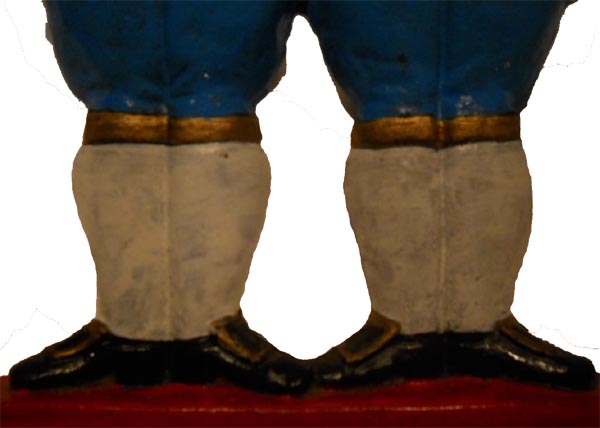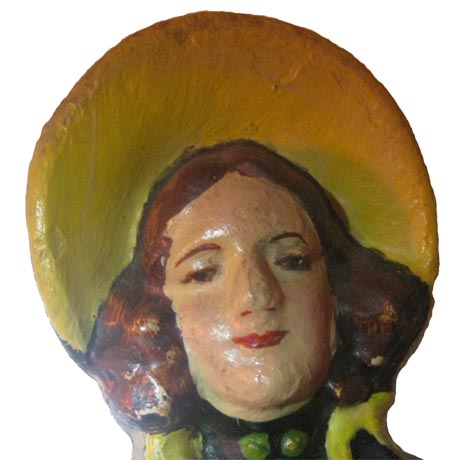Note the paint on his legs, the legs have two different shade of cream color: one where the paint has gone over the original paint and the other over where the original paint is missing.
 This "Color Difference" is best illustrated in the example to the right. Note the cream color of paint on the legs There 2 distinct areas
Dark & Soild Cream The Dark Area is the repainting over an UpPainted area The solid cream is over the Original Paint.
This "Color Difference" is best illustrated in the example to the right. Note the cream color of paint on the legs There 2 distinct areas
Dark & Soild Cream The Dark Area is the repainting over an UpPainted area The solid cream is over the Original Paint.
 In another example: Note - the breaks in the paint surface especially along nose and on the chin
showing clearly this as a repaint.
In another example: Note - the breaks in the paint surface especially along nose and on the chin
showing clearly this as a repaint.